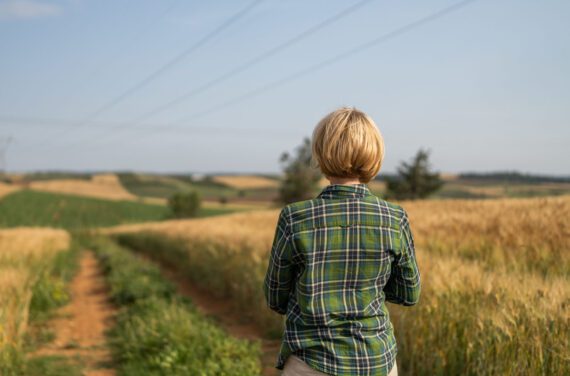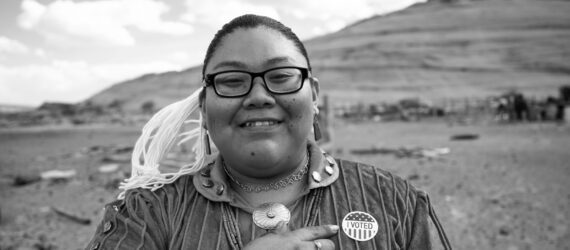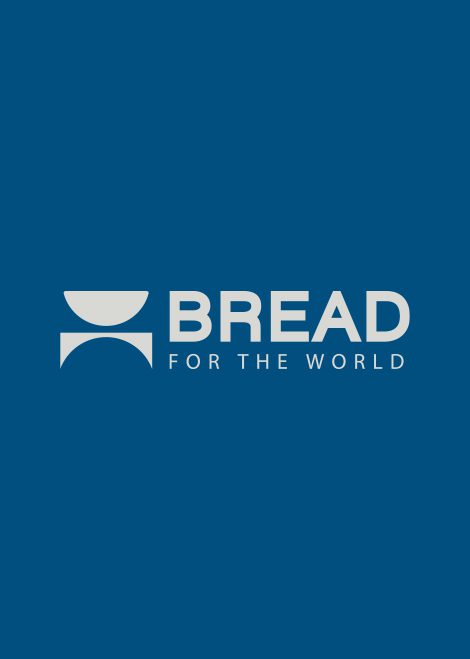When Patricia retired, she felt called to become involved with Bread for the World through her church. When she learned more about the realities of hunger, it really hit home for her.
“I live in Oklahoma,” she said. “We’re surrounded by cows and wheat fields. Food production is the second largest industry in Oklahoma – but we have the second highest food insecurity rate of any state in the country.”
Then her nine-year-old granddaughter told her that she wanted to eat with her friends who ate breakfast at school. “They were eating at school because their families couldn’t afford breakfast. I didn’t know how to explain it to her. And I know her friends’ families,” she said. “They’re good people. Most of them are working. But I didn’t know how to explain to her that their incomes just weren’t enough to always buy food.”
Full Fields, Empty Stomachs
Oklahoma’s children aren’t the only ones facing this problem, Patricia learned. Agriculture is the number one industry in Mississippi, but more people experience hunger in Mississippi than any other state. Many of the states with the highest rates of food insecurity are also populated by thousands of farms. Forty percent of Tennessee is farmland. Georgia has nearly ten million acres of farmland. Louisiana’s agriculture industry is known for sweet potatoes, rice, corn and tomatoes.
But food prices are rising. Food prices increased 9.9 percent in 2022, the largest annual increase since 1979 (USDA). This means a lot of parents are making the heartbreaking decision between food and other basic needs, like housing or healthcare.

How is it possible that in this country of abundance, so many families – including those who work in food production – don’t know where their next meal will come from?
What is Bread for the World?
Bread for the World is a Christian advocacy organization urging U.S. decision makers to do all they can to pursue a world without hunger. Our mission is to educate and equip people to advocate for policies and programs that can help end hunger in the U.S. and around the world.
Advocacy is important because federal nutrition programs provide roughly 10 times as much food assistance as private churches and charities combined. With the stroke of a pen, our government leaders have the power to create policies and programs that impact millions of people at once.
How can advocacy help children facing hunger?
SNAP (the Supplemental Nutrition Assistance Program) currently serves more than 41 million people per month, almost half of whom are children. SNAP is important because in the U.S., more than one in five U.S. children are at risk of hunger. This doesn’t just mean they’re skipping meals. It could also mean they may be eating less expensive, less nutritious foods that lead to poor health and obesity, because their family simply does not have enough money to buy nutritious foods.
Children whose families receive SNAP automatically qualify for no-cost school meals. Some SNAP families can also receive resources on top of their benefits to purchase fresh fruits and vegetables at participating farmers markets, farm stands, and grocery stores, through the Gus Schumacher Nutrition Incentive Program (GusNIP). This is especially vital for children’s healthy growth, because eating fruits and vegetables helps prevent obesity and diseases like type 2 diabetes. It also strengthens children’s immune systems, helps them fight illnesses, and improves school performance. Unfortunately, GusNIP reaches only a small share of SNAP recipients.
But SNAP and GusNIP funding isn’t guaranteed. Every five years, Congress decides how much funding to allocate to these programs. With food prices remaining high in the U.S., the need for these programs is increasing. Advocates like Patricia are a critical part of getting lawmakers to approve the funding necessary to make sure no child in the U.S. goes hungry.
A small part of the federal budget can go a long way toward saving lives. Federal spending on USDA‘s food and nutrition assistance programs totaled $183.0 billion in fiscal year 2022 – less than 3 percent of the federal budget.
Bread’s Offering of Letters
Patricia first learned about Bread for the World through her church’s participation in Bread’s Offering of Letters. Every year, Americans in churches around the country participate in Bread’s Offering of Letters by writing letters to their members of Congress to advocate for hunger issues.
When Patricia stepped up to lead her church’s Offering of Letters program, she realized that education was an important part of getting people involved. So she changed the traditional format of her church’s Offering of Letters program. Instead of getting members together during the Sunday School hour to write their letters, she used that time as an information session providing data on hunger in their own community, then asked everyone to write or email their members of Congress when they got home.
She talked about how young children are more vulnerable than any other group to the damaging impacts of hunger – even for short periods. She talked about how childhood hunger is a predictor of depression in adolescence and may also play a part in contributing to substance abuse disorders. She talked about racial inequities, and how Latino and Black households are more than twice as likely to report being food insecure as white households.
She also talked about how there are programs and policies that are proven to work. In 2021, when lawmakers expanded the Child Tax Credit (thanks in part to Bread advocates), child poverty in the U.S. was cut in half. It was the largest drop ever recorded.

Participation in the Offering of Letters at Patricia’s church tripled. And it inspired her to get more involved in advocating for children and families experiencing food insecurity. She participates in her region’s quarterly Bread Zoom meetings and regularly communicates with the local office of her representative on hunger issues. She also attended Bread’s 2023 Advocacy Summit.
“When you walk the halls of Congress, it becomes real,” she said. “Decisions that are made in these rooms are directly impacting what happens across the country.”
The Impact
Patricia emphasizes to her community how much these letters really do make a difference. It comes from personal experience, including conversations with her congressperson.
“We have a participatory democracy, and it’s pretty amazing,” she said. “I’ve seen that when you get past all the hype that’s in the news, you find out that there are caring people behind these laws, behind how the system really works. I keep hearing how broken our democracy is, but it works.”
Every letter you write to your representatives on Capitol Hill is read and cataloged – and tells your representative which issues to prioritize.
How can my church participate in Bread’s Offering of Letters?
If your church does not already participate in Bread’s Offering of Letters, and you’d like to get involved, you can read about our current legislative priorities for the 2024 farm bill, and connect with your region’s local organizer here. Your local organizer can give you tips on how to best get started at your church.
You can hold an event in person or online – gathering church members to actually write letters together, or hosting an educational session, like Patricia does. Letters can be handwritten or emailed.
Collect your church’s handwritten letters for each member of Congress and mail them to your district office or Capitol Hill. Hand-delivering letters to the local offices of your respective members of Congress can be an even more effective way to make sure your message is heard.
Patricia’s story is just one of thousands around the country. Every voice matters. With your help, we can reach the people with the power and resources to make hunger a problem of the past.
As Patricia put it: “As you follow in the footsteps of God, it doesn’t only benefit the person in need. It fills your soul.”




